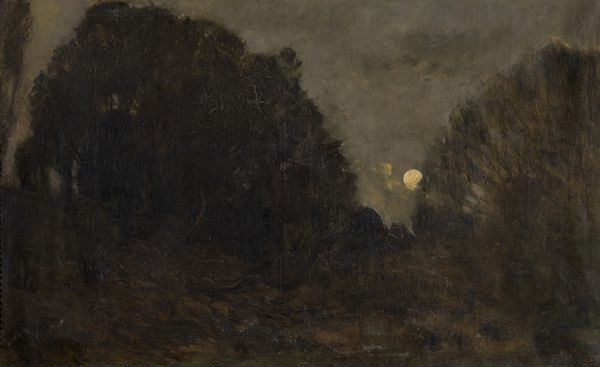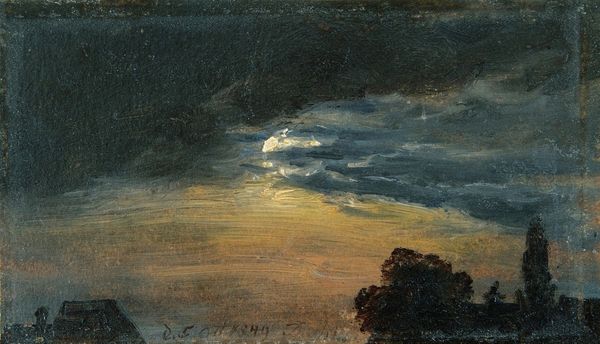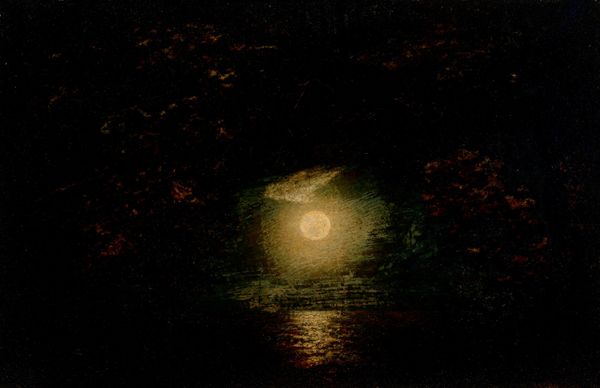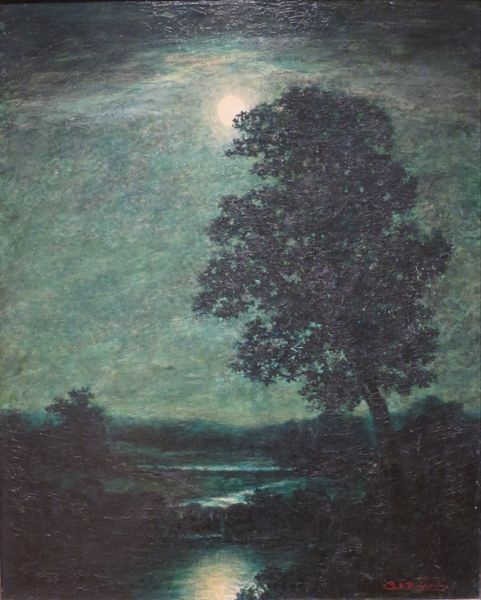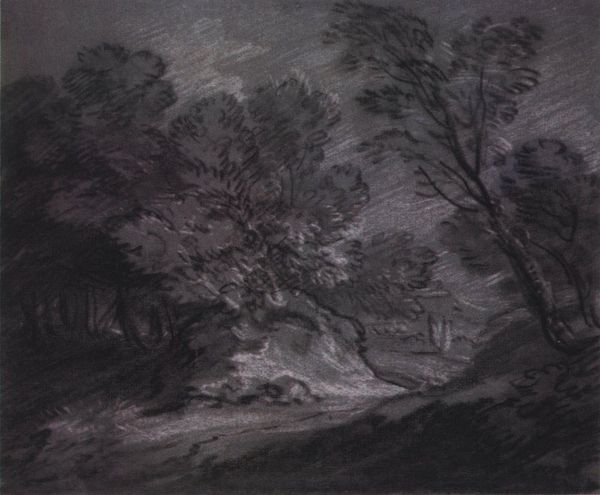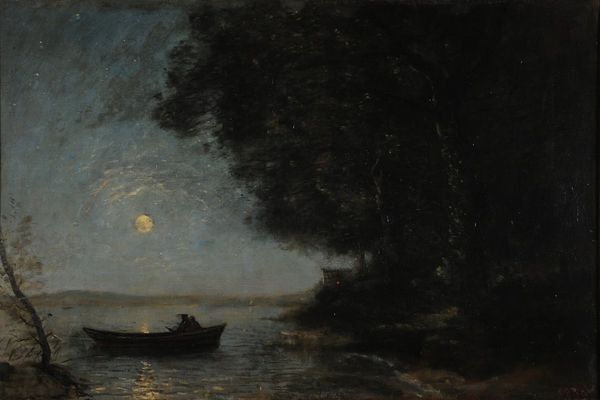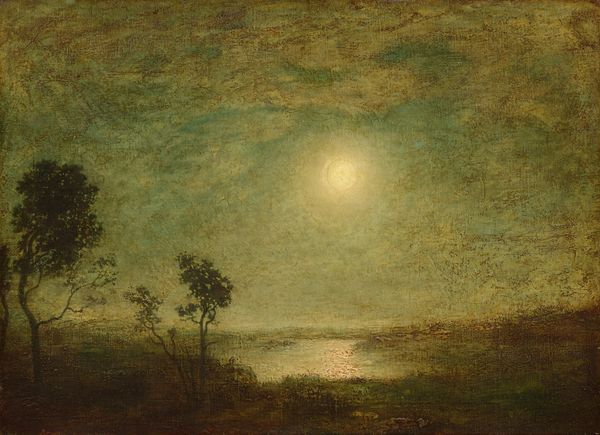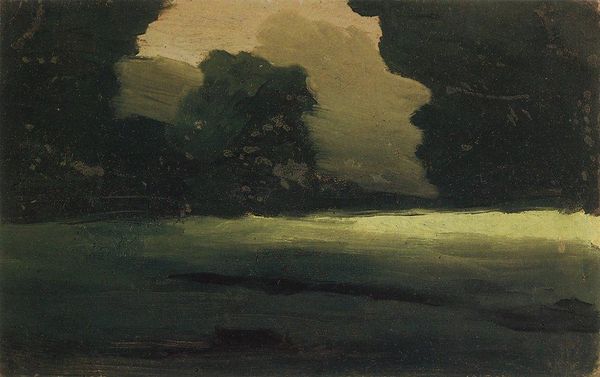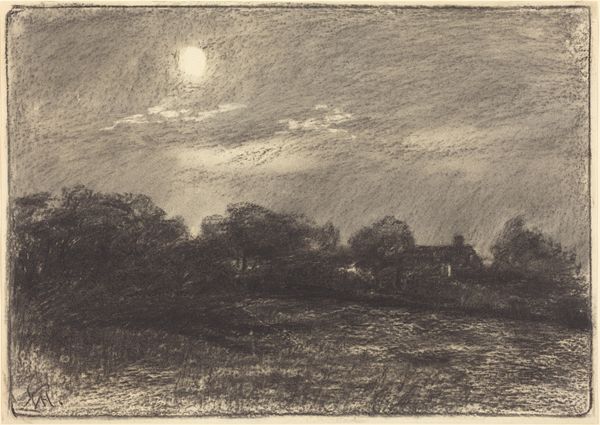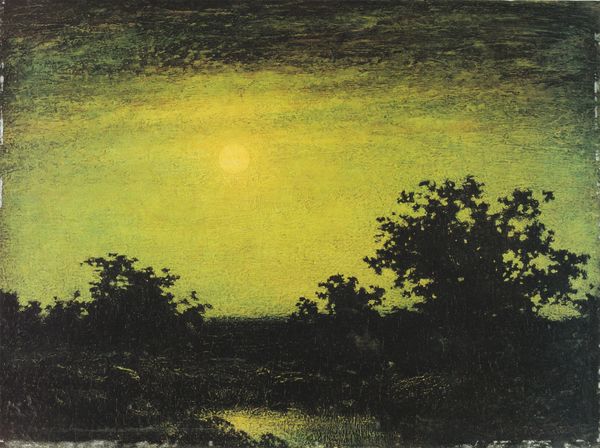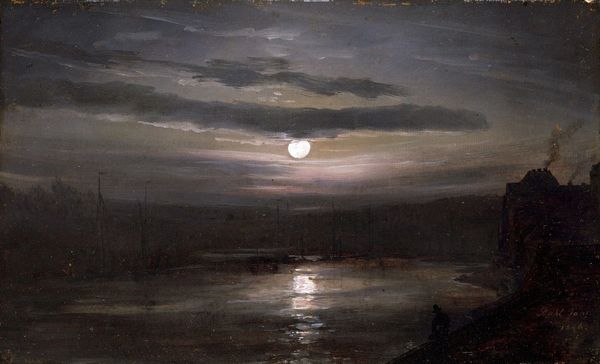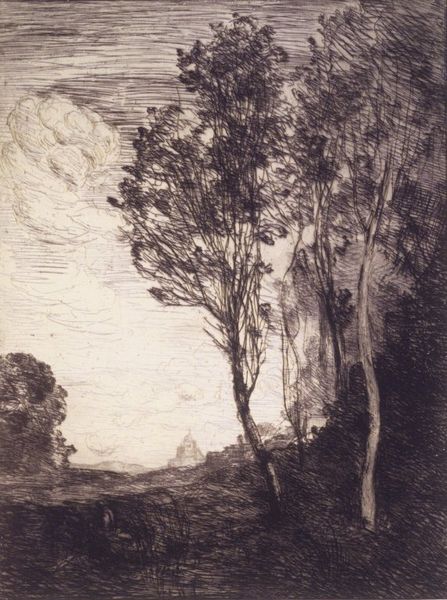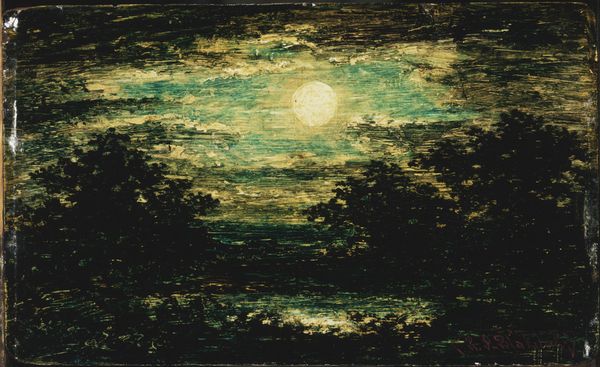
painting, plein-air, oil-paint
#
night
#
sky
#
painting
#
plein-air
#
oil-paint
#
landscape
#
romanticism
Dimensions: 15 x 25.7 cm
Copyright: Public domain
Curator: "The Edge of a Heath by Moonlight," painted around 1810 by John Constable, presents us with a striking, albeit intimate, landscape bathed in nocturnal light. Painted with oils, the piece offers an early glimpse into Constable's fascination with capturing the fleeting effects of nature. Editor: Oh, it's quite brooding, isn't it? The color palette, mostly dark greens and blues, feels like a lullaby just before the storm. It almost feels more Turner than Constable, if I didn’t know better. Curator: It's interesting that you say that. We often view Constable through the lens of his later, grander works, such as "The Hay Wain", but here, he's experimenting, drawn perhaps to the sublime terror and beauty of the night that defined so much of the Romantic era. Note, particularly, the brushwork; you can really sense the energy with which it was created. Editor: You're right about the brushwork! The application of paint is so free, almost impulsive, especially around the moon. The texture adds so much depth to the otherwise subdued palette. And the moon! It feels almost alive, a beacon pulling you into this mysterious heath. The political turbulence of the late eighteenth century shaped what beauty really was; this feels just about right. Curator: Yes, the socio-political atmosphere certainly had a role to play, however Constable here doesn't appear overtly engaged with the tumultuous world stage. Rather he is finding a new role for the artist as the truthful interpreter of his immediate, felt surroundings; his own locality as sufficient and valuable in itself, despite the larger issues surrounding the nation. I feel what is exciting about this particular work is, rather, to view the emergence of an aesthetic of observation, based on sincerity and attention. Editor: Mmm, perhaps. Still, this painting… it’s less about documenting, and more about feeling. More Wordsworth than… I don’t know, Burke? Curator: Perhaps the balance tips toward emotion. And indeed, that feeling you get reflects that the painting was probably done *en plein air*. But, viewing it from today, knowing what came later in the artist’s practice, we recognize Constable wrestling with new and emerging notions of Britishness that is so crucial to our understanding of landscape painting to come. Editor: Agreed. Now I see this with fresh eyes: less prelude, and more beginning. What an interesting point to end our brief exchange. Curator: Yes indeed, let's conclude by recommending to listeners: consider this not merely as landscape but a cultural landscape.
Comments
No comments
Be the first to comment and join the conversation on the ultimate creative platform.
